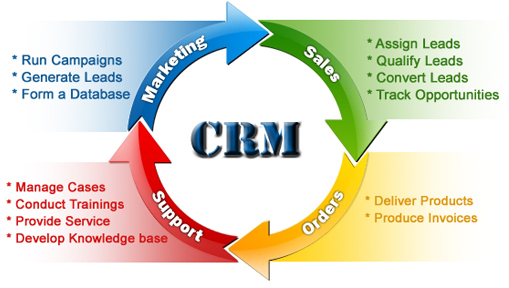Change is a process not an event. That’s why change management plans must adapt and be tailored to each stage in the project life cycle. Enterprise software deployment phases vary by implementation methodology, but for purposes of illustrating change impact during a CRM software implementation I’ve taken a lowest common denominator approach of using the most typical deployment phases of Design, Development, Deployment and Operate. The below change evolution diagram is simple and immensely powerful in forecasting resistance to change and planning your change program.

At project kick-off, employee emotions span from trepidation to excitement. Expectations are normally moderate, but elevate during the Design phase (i.e. when hearing the project vision, learning the project objectives, attending the workshops and receiving updates pursuant to the communications plan).
During the development phase, staff expectations begin a downward trajectory. The project challenges are realized. Project need is questioned. Project success is uncertain. Scapegoats are planned. Some users and even project team members may begin to distance themselves from the project. This is a critical time for the Organizational Change Management (OCM) team to gather feedback, understand the link between project plan deviations and staff associated with those deviations, increase active communication with line of business managers, power users and change management champions, and deliver key messaging as prescribed in the Communications Plan.
The transition from the development phase to the deployment phase is a pivotal point in determining the change impact to the project timeframe, budget and risk. Expectations and emotions will have plummeted at this point. Staff are impressionable. Some will be looking for executive sponsorship and management leadership while others will be considering fight or flight. The change management leaders must step up to reaffirm the project vision, provide perspective and forecast the journey ahead. Management must paint reality but give hope. The effectiveness of these efforts will have a material impact on both the project progress as well as the realization of business objectives.
The deployment phase will begin a gradual upward trend. Training will increase user confidence and reveal new capabilities. If the go-live event is well planned it will incur some stress, and likely some bumps in the road but no significant setbacks. Some users will sit the sidelines waiting for others to form opinions while others will resist the change. User resistance will not be blatantly displayed but instead masked as red herrings. Application monitoring and utilization measurement are critical at this stage. User adoption dashboards are essential tools. A user adoption best practice is to measure completion of end to end business process cycles as opposed to just rote logins. Quickly identifying users that are failing to adopt the necessary change and providing them additional education, training or motivation will accelerate the continued upward trajectory and the realization of planned business benefits.
The Operate phase is a journey of continuous improvement. Most of the process and technology benefits designed during the deployment will be realized in about the first six months. However, it is critical to remember that CRM is a journey and not a destination. Even after realizing the benefits targeted during the implementation, most businesses are using less than one-third of the CRM software potential. This is the time to activate a user committee or community made up of cross departmental managers and users to focus on continuous process improvement and getting more payback from the CRM investment.

